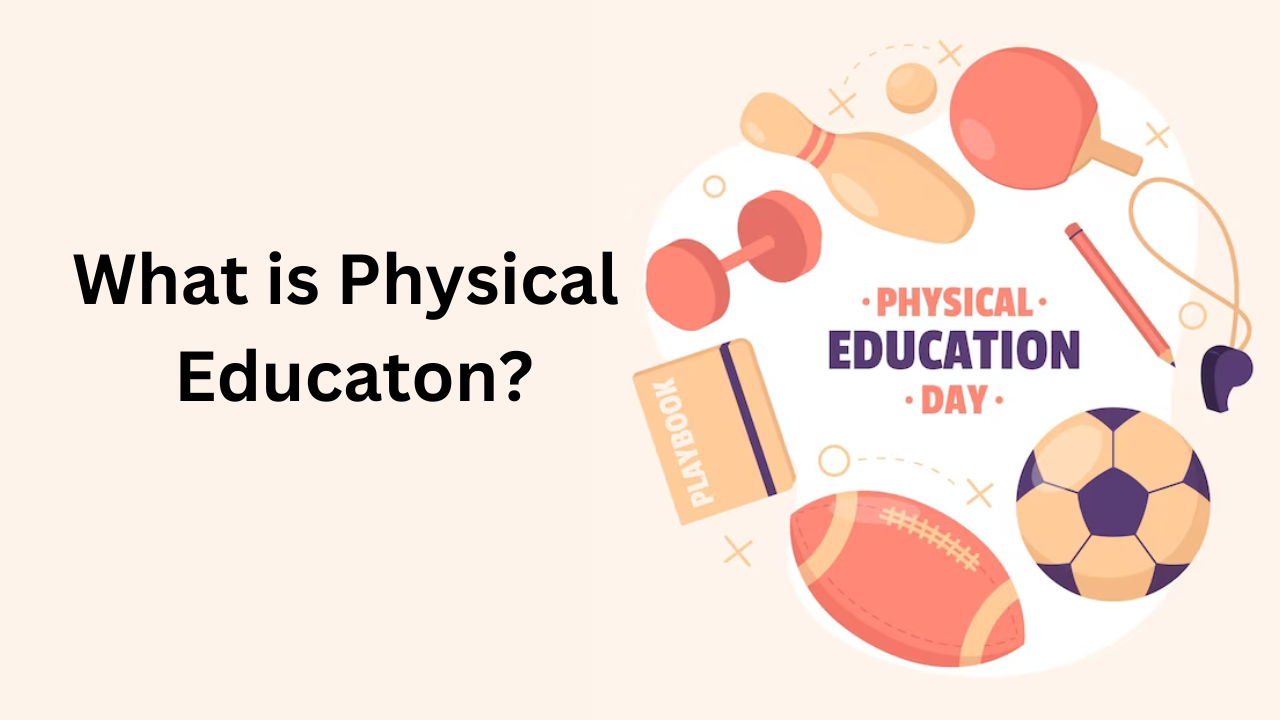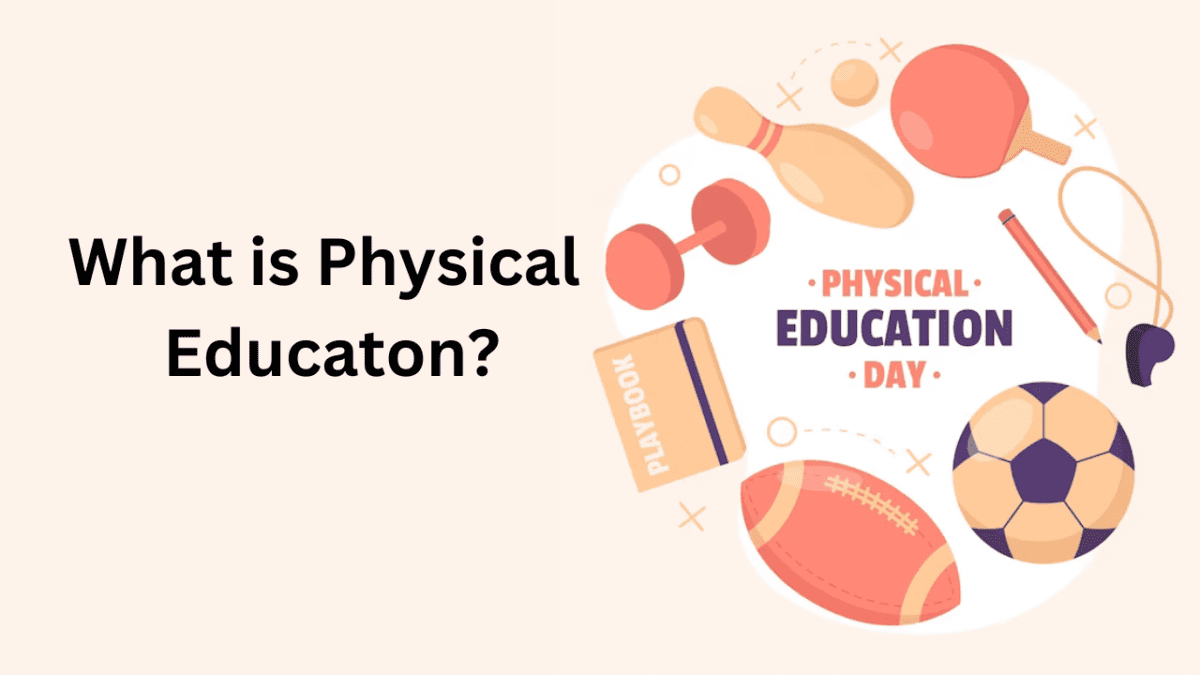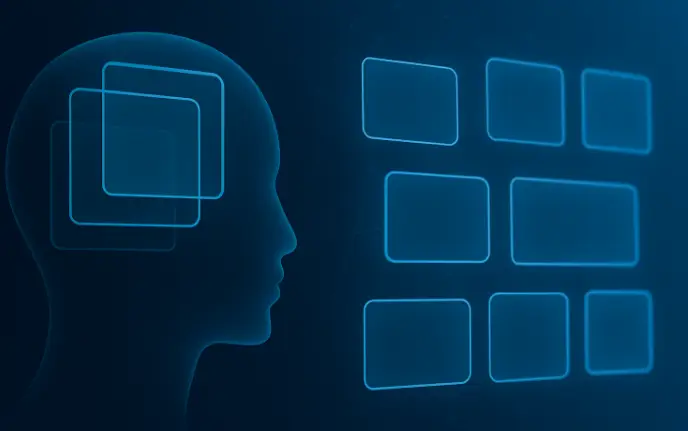
What is Physical education? Physical Education is important for healthy life. Physical education commonly known as PE, is a vital aspect of the education system that revolves around the well-being and physical fitness of individuals. In this article, we will explore the fundamental concepts of physical education, its importance, and the positive impact it has on overall health. We’ll break down the key components of PE and discuss how it contributes to personal development, fostering a love for physical activity, and creating a foundation for a healthy lifestyle.

Understanding Physical Education
Physical education goes beyond merely playing sports; it encompasses a wide range of activities designed to enhance physical fitness, motor skills, and overall health. The goal is to instill habits that promote an active lifestyle, contributing to physical, mental, and social well-being.
1. Physical Fitness and Exercise
At its core, physical education aims to improve physical fitness through regular exercise. This includes activities like running, jumping, and various sports that engage different muscle groups. These exercises not only enhance strength and flexibility but also contribute to cardiovascular health.
2. Sports and Team Building
Participating in sports is a common element of physical education. Team sports, such as soccer, basketball, and volleyball, promote teamwork, cooperation, and communication. These aspects are valuable not only in the field but also in various aspects of life.
3. Motor Skills Development
Physical education is instrumental in developing motor skills, encompassing both gross motor skills (larger movements like running and jumping) and fine motor skills (smaller, more precise movements). These skills are crucial for daily activities and contribute to overall coordination and control.
Importance of Physical Education
Physical education plays a crucial role in shaping a well-rounded individual. Here are some key reasons why it is an integral part of the educational curriculum:
1. Health Promotion
Regular physical activity is linked to numerous health benefits. Physical education encourages students to engage in activities that strengthen their bodies, improve endurance, and reduce the risk of various health issues, including obesity and cardiovascular diseases.
2. Academic Performance
Research suggests a positive correlation between physical activity and academic performance. Regular exercise is known to enhance cognitive function, attention span, and memory. Physical education, therefore, indirectly contributes to academic success.
3. Lifelong Habits
One of the primary goals of physical education is to instill the importance of an active lifestyle from a young age. By introducing enjoyable and varied physical activities, PE aims to create habits that individuals carry into adulthood, promoting long-term health.
4. Social and Emotional Well-being
Participation in sports and physical activities fosters social skills and emotional well-being. Team sports teach collaboration, communication, and resilience.
Moreover, physical activity releases endorphins, which contribute to improved mood and reduced stress levels.
Components of Physical Education
Let’s delve into the different components that make up a comprehensive physical education program:
1. Fitness Training
Fitness training forms the core of physical education. This includes cardiovascular exercises, strength training, and flexibility exercises. Fitness assessments may also be conducted to track progress and set goals.
2. Sports and Games
Engaging in a variety of sports and games introduces students to different physical activities. This not only adds an element of fun but also allows individuals to discover their preferences and strengths.
3. Health Education
Physical education often includes components of health education. This may cover topics such as nutrition, the importance of hydration, the effects of various substances on the body, and overall health awareness.
4. Skill Development
Skill-based activities focus on improving specific abilities. This could include practicing specific movements, learning proper techniques for various sports, and refining coordination and balance.
5. Outdoor Activities
Connecting with nature through outdoor activities is another facet of physical education. Activities like hiking, camping, and orienteering not only promote physical fitness but also nurture an appreciation for the outdoors.
Challenges and Solutions
While the benefits of physical education are evident, various challenges can impede its effectiveness. These include limited resources, time constraints, and, at times, a lack of emphasis on PE in educational curricula.
1. Limited Resources
Some schools may face challenges in providing adequate resources for a comprehensive physical education program. This includes sports equipment, outdoor spaces, and qualified instructors.
Solution: Collaborative efforts between schools, communities, and policymakers can help secure resources. Community partnerships, fundraising initiatives, and advocacy for the importance of physical education can contribute to overcoming resource limitations.
2. Time Constraints
With a curriculum filled with academic subjects, finding time for physical education can be a challenge. Schools may prioritize academic subjects over PE.
Solution: Recognizing the holistic benefits of physical education, schools can integrate physical activity into daily routines. Short, frequent breaks for physical activity can positively impact students without significantly impacting academic schedules.
3. Lack of Emphasis on PE
In some educational systems, physical education may not receive the attention it deserves. This can result in insufficient funding, lower teacher qualifications, and limited support.
Solution: Advocacy for the importance of physical education is crucial. Educators, parents, and health professionals can collaborate to raise awareness about the long-term benefits of PE and influence policy changes.

Conclusion
Physical education is more than just a class; it’s a foundation for a healthy and fulfilling life. By promoting physical fitness, skill development, and a positive attitude towards physical activity, PE sets the stage for lifelong well-being. As we recognize the interconnectedness of physical, mental, and social health, prioritizing physical education becomes essential in shaping individuals who are not only academically adept but also physically and emotionally resilient. It is a collective responsibility to ensure that every individual has access to quality physical education, laying the groundwork for a healthier and happier society.









